Bay of Kotor
May 9, 2018 7 min read
Your first thought might be to enter Montenegro by flying into the capital, Podgorica. Instead, I would recommend to start your Montenegro trip on the other side of the border to Croatia, in Dubrovnik. The city, overcrowded as it might be in high season, is still an enchanting place and a perfect combination with a road trip in Montenegro. After a day or two in Dubrovnik, pick up a rental car (or hop on a bus) and drive to Montenegro. Soon after crossing the border you will reach Bay of Kotor, a terrific start of the trip.
Boka Kotorska is the local name of the Bay of Kotor, but people here simply call it Boka (The Bay). Boka has a peculiar shape, like a headless robed ghost reaching out with its arms or maybe it’s an angel spreading her wings? I don’t know, anyway, it’s a special shape.
The bay is composed of four smaller bays. Boka’s main entrance is Bay of Herceg Novi and the second outer bay is Bay of Tivat. The two inner bays, connected to the outer bays by Verige Strait, are Bay of Risan and Bay of Kotor.
In 2007, a plan for building a bridge over Verige strait was completed. Construction has not started yet because the project still requires financing. Also, the Natural and Culturo-Historical Region of Kotor is a UNESCO World Heritage Site since 1979 and UNESCO raised concerns against building a bridge in the area. Bridge or no bridge, you anyway want to drive the scenic E65/80 following the shores around the bay.
If you are coming back to Dubrovnik the same way, you might consider taking the ferry over Verige Strait. The ferry runs between Kamenari and Lepetane and it takes just 5 minutes across. Note that even if the ferry ride is short, there can be long queues to board the ferry in high season.
We started from Dubrovnik in the early afternoon, waited maybe an hour in the queue to the border crossing before entering Montenegro. The plan was to make a stop in Perast and explore Kotor during the evening and part of the next day. As usual we spent more time on the road than planned so we only made it to Dobrota just before Kotor where we stopped for the night.
The bay is beautiful, but it doesn’t have so many good beaches. Instead, concrete swimming terraces are popular. This one was outside the hotel in Dobrota so it was easy to take a refreshing morning swim before breakfast to wake up.
Herceg Novi is the first town you will arrive in when driving around the bay. Like Kotor it has an old town, but it is not as impressive. A good thing with this hilly town is that fewer tourists find their way here compared to the star attractions of the bay. The city has grown together with Igalo which is a spa and health center with healing sea mud and mineral water springs.
While Kotor is the most visited place in Boka, the small village of Perast is calmer and equally picturesque. The village is situated beneath the Hill of St Elijah, opposite the Verige Strait. In this area, archaeologists found traces of the first settlements in the bay, including findings of prehistoric human life. Perast peaked in wealth and influence during the 18th century when the Republic of Venice ruled over the village. The citizens had the privilege to trade on the Venetian markets without paying taxes. At that time Perast had over 1600 residents compared to a few hundred living in the village today.
Perast might be tiny, but it has 16 churches and 17 palazzos. Some of them are now in ruins while others are renovated. One of the most beautiful buildings in town, the Bujović Palace, houses the Perast Museum with an exhibition showing the maritime history of the village. The exhibition is nothing extraordinary but the building and the view from the balcony are nice.
The most striking building in town is St Nicholas Church on the main square. For the best views over the bay, climb the 55m high bell tower (€1).
There are two islets in the bay just off the shore from Perast, Island of St George (Ostrvo Sveti Đorđe) and Our Lady of the Rocks (Gospa od Škrpjela).
The Benedictines established the Abbey of St George on Sveti Đorđe in the 12th century. Since then it has been attacked and destroyed by both earthquakes and invaders. For example, in 1571 the abbey and the whole town was burnt to the ground by the pirate Karadoz. On the island is also a graveyard for the old nobility of Perast. Visitors are not allowed on Sveti Đorđe.
Our Lady of the Rocks is open to visitors and a boat ride cost €5 return ticket (2018). The island is artificial and created over centuries around a rock in the bay by scuttling ships and depositing stones. According to the legend, this started when seamen found the rock and discovered an image of the Madonna and Child on it. If you happen to be here on July 22nd, you can take part in a ceremony where the locals take their boats out to the island and throw stones into the water to continue the tradition.
The main building on the island is the Church of Our Lady of the Rocks. The church also has a small museum (€1, 2018).
Perast is a good stop on the way to Kotor and you don’t need to do any sightseeing to enjoy your time here. The village is perfect for a relaxing lunch or dinner at the waterfront.
In the innermost part of Boka you finally arrive in Kotor at the foot of Mt Lovćen. Kotor’s Stari Grad (Old Town) is the main attraction for most visitors coming to the bay. It is easy to understand why, the medieval old town is exquisite and well preserved. It has a maze of narrow cobbled streets, small squares and a church waiting around every corner.
We had not read much about Kotor and not seen many photos either before arriving to the town and it was a nice surprise to discover it. Kotor is smaller than Dubrovnik and we liked the intimacy of the old town. It was fun to wander around for a while, trying to imagine the life of people here in medieval times. It’s unnecessary to point out any specific sights in Kotor, the town as a whole is the attraction.
Well, there is one part that stands out, the town fortifications. Sturdy walls guard the town towards the water to the north and southwest. To the east is St John’s Hill, one of the peaks in the Mt Lovćen massif. The fortifications continue up the hill making a 4.5km long loop coming back to the town. The wall has a thickness of between 2-16m and a height of up to 20m. It is possible to ascend the hill via stairs with 1350 steps to the fortification at the top, San Giovanni Castle. The view over Kotor and the bay is outstanding, or at least that’s what we heard.
It was raining almost non-stop while we were in Kotor, and we had only light clothes and bad shoes. We skipped the walk to the top of the hill as we anyway would see the view over the bay from Mt Lovćen later on during a drive up the mountain side.
Overall it was a great visit in Kotor, but there was one bad thing, the crowds. Nothing much to do about that, we came during high season (July - August) so we knew we would not be alone in the town. If you can, plan your trip during low or shoulder season for an even better experience.
It was time for us to leave Bay of Kotor and continue on to Lovćen National Park. The P1 road from Kotor to Mt Lovćen is narrow, curvy and scenic. It is from the viewpoints along this road you get the best views of the Bay of Kotor. Check out the Njegoš Mausoleum post to know all about the P1 road and how to get to the unusual mausoleum on top of the second-highest peak of Mt Lovćen.
In this panorama, two of the smaller bays are visible, Bay of Kotor and Bay of Tivat. The airfield on the left is the Tivat Airport. I wish I had brought a better camera on this trip. The photos from the point-and-shoot camera I carried don’t do this impressive panorama justice.
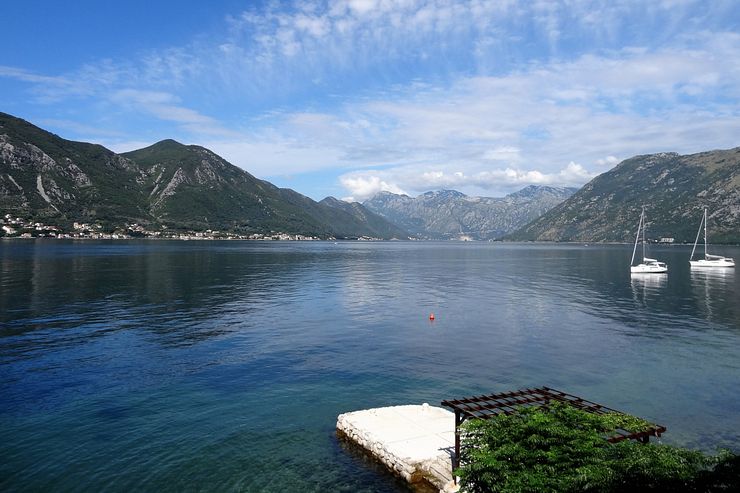
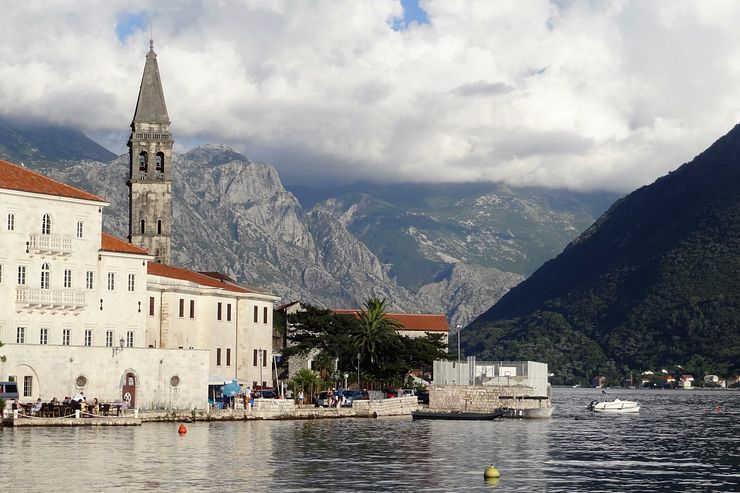
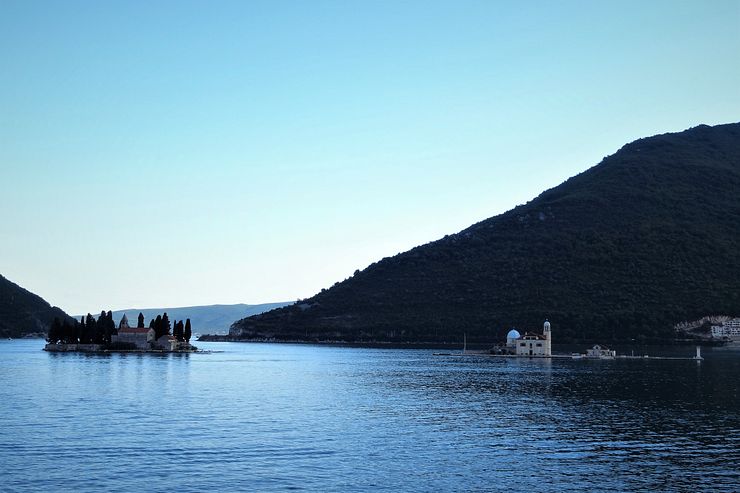
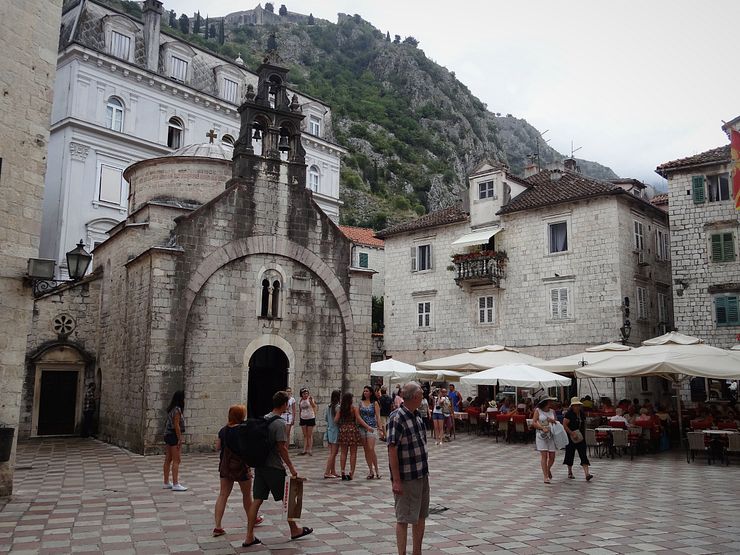
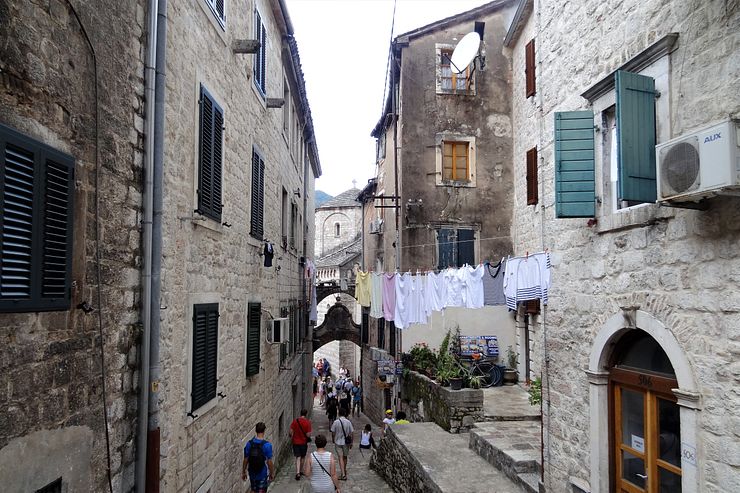
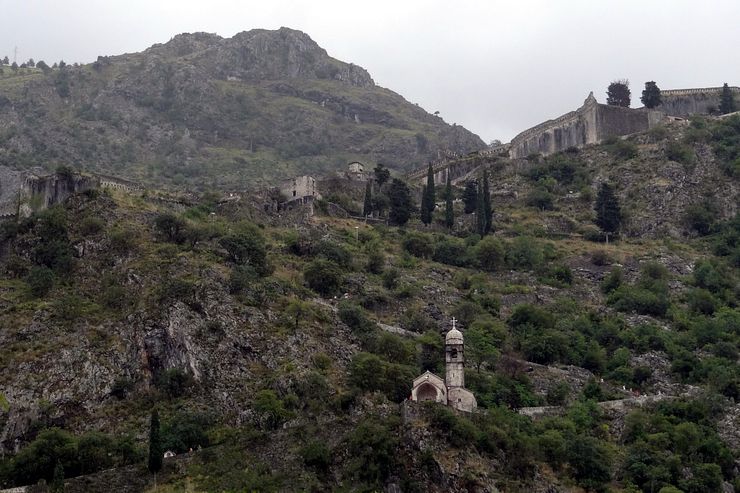
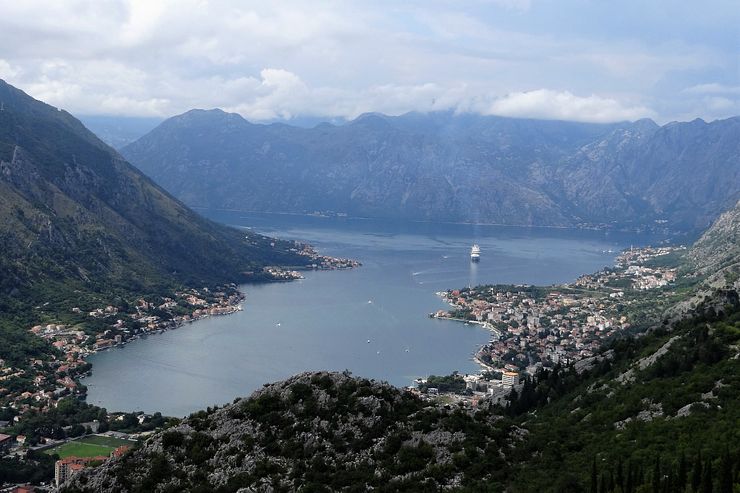
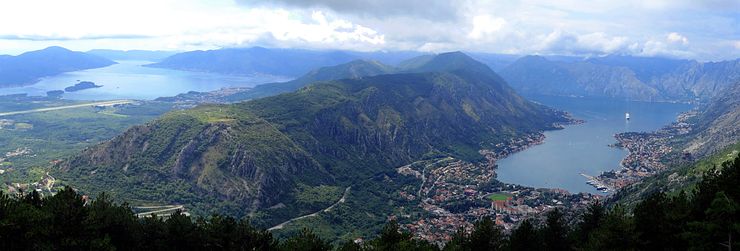
Comments
Comments are closed. Contact me if you have a question concerning the content of this page.